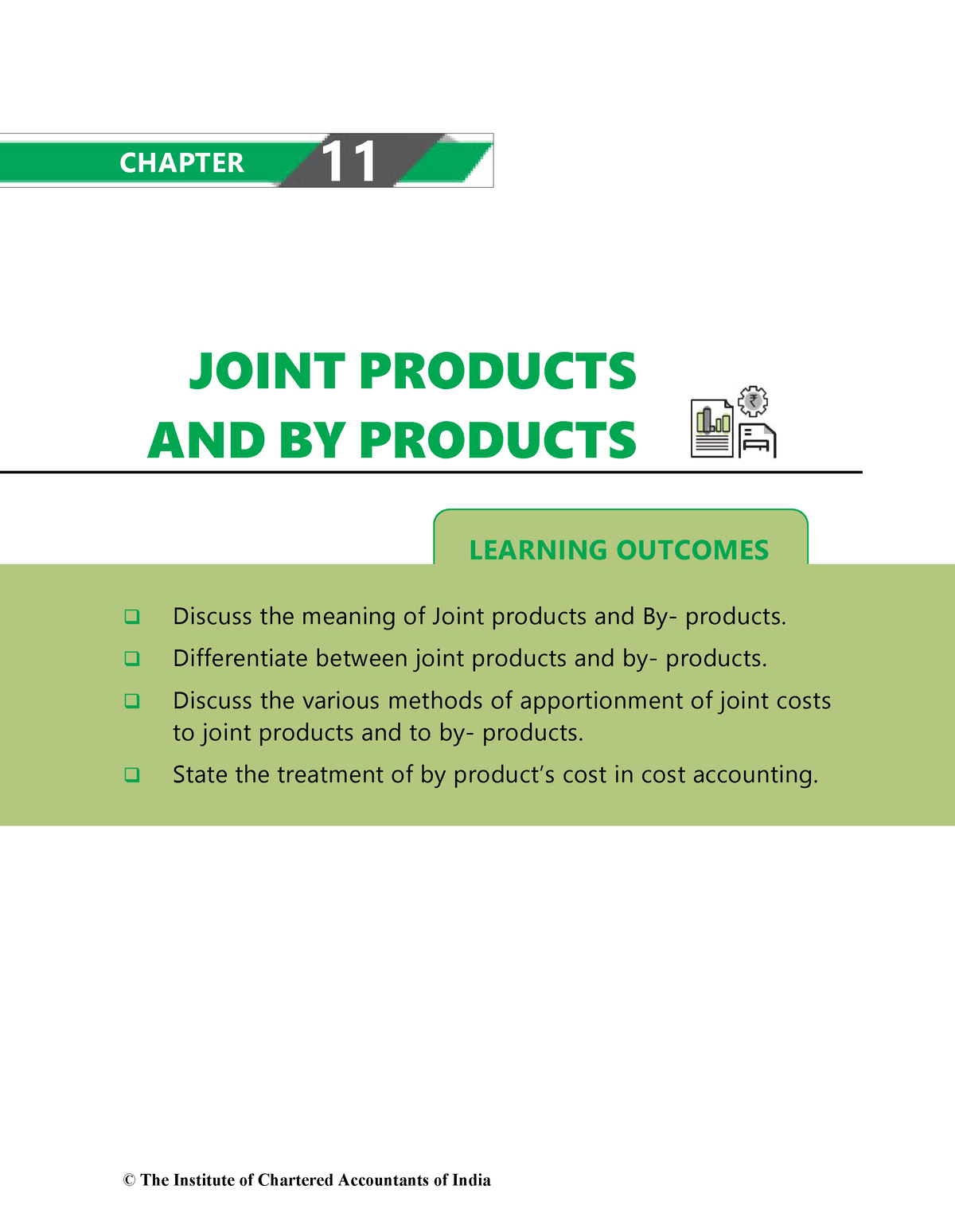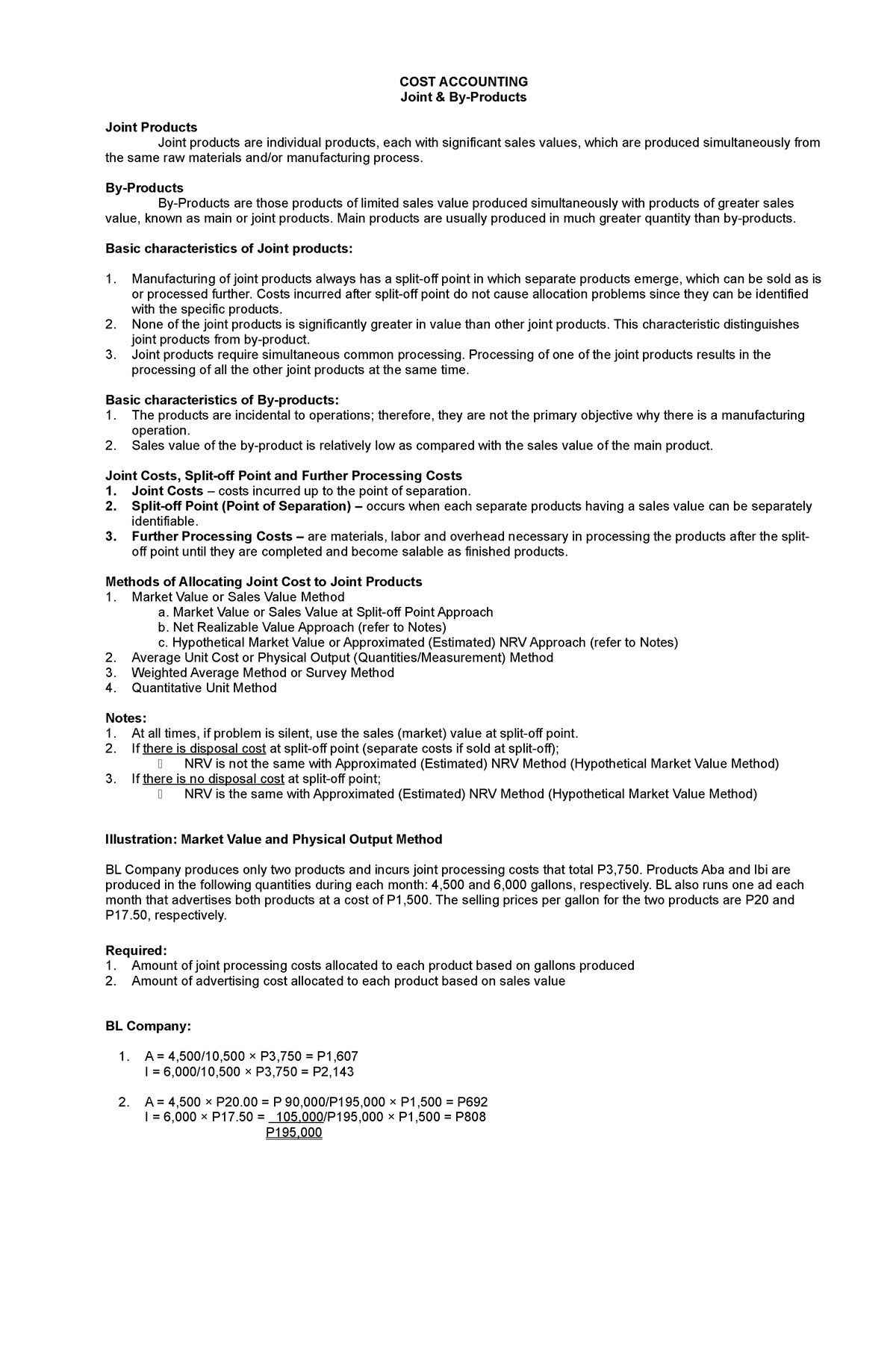Joint Product Costing Characteristics and Examples

Another important issue with joint supply products is the allocation of expenses. Since both products are derived from the same source, it is often difficult to figure out how to divide up expenses. However, there is no formal logic for adopting a particular method of apportionment. An organization can opt for any of the methods available, depending upon the business type, uniformity of products, etc. By Product can be understood as the subsidiary or secondary product which is incidentally produced, along with the main product, and has saleable or usable value. While producing the main product, there are instances when another product emanates which are of minor importance, as compared to the main product, are the by-product.
How confident are you in your long term financial plan?
For example, suppose a company produces multiple products from a common set of resources. In that case, the cost accountant might choose the sales value at the split-off method to allocate joint costs based on the relative sales value of each product. The joint products may be defined as two or more different products that are produced simultaneously by processing one or more raw materials through a common production process or a series of production processes.
To Ensure One Vote Per Person, Please Include the Following Info
A joint product is an output acquired in the manufacturing operation after processing a primary product. It is called joint because it is obtained with other outputs from the main product, all of which have equal importance and use in the market. The simplest method is just to allocate costs on a pro rata basis based on an agreed set of criteria (for example, number of employees). More advanced methods give weightings to the units based on other criteria such as market value. The method is really a weighted market value basis using the total market or sales value of each unit (quantity sold multiplied by the unit sales price). It is not usually feasible to simply split the expenses down the middle in the case of two products because one product usually sells at a premium to the other.
Why You Can Trust Finance Strategists
Whereas the motivation for providing multiple products may be driven by consumer expectations, a common attraction is the opportunity to reduce per unit costs. When a venture can appreciate such cost savings, the opportunity is called an economy of scope. However, it will be hard for some products in which the output cannot be measured easily. Some process uses the same raw material but produces the output of a liquid and solid item. All of the output will measure by their physical weight or volume such as tones, kg, liter, and so on. The cost of raw material will be proportion to all products base on each physical output.
Just-In-Time: History, Objective, Productions, and Purchasing
For instance, if the business needs to fulfill the customer’s order for cheese, it must process the milk although the cheese will be produced with the process other joint products like cream and butter will be produced as well. The easiest way is to sum up the joint cost for all the products, and divide by the total number of units. The unit cost is also split between them in proportion to their market value share. The situation is quite different for any costs incurred from the split-off point onward. Since these costs can be attributed to specific products, you should never set a product price to be at or below the total costs incurred after the split-off point. The cost allocations are entirely different between the two allocation methods, since the first calculation is based on revenue at the split-off point, and the second is largely based on costs incurred after the split-off point.
Compliance and Penalties
It will be simple but only apply to the product with similar features and price, and the output can separate in common units. The production of butter, cheese, and cream from milk is also another example of a joint product. The business does not have to consider the production of the bed to fulfill the order for the chair, as the two products are not dependent on each other. On the contrary, the production of one joint product is dependent on the production of another joint product. After the split-off point, the products can be further processed individually. For instance, different products are obtained from milk that, includes cheese, cream, butter, etc.
Allocating joint costs does not help management, since the resulting information is based on essentially arbitrary allocations. Consequently, the best allocation method does not have to be especially accurate, but it should be easy to calculate, and be readily defensible if it is reviewed by an auditor. A cashew nuts processing unit produces two varieties of cashew nuts, premium and regular, at a joint cost of ₹75000, out of which ₹25000 is the fixed cost. The quantity produced is 100Kg and 150Kg; and sold at ₹750 and ₹600 per Kg, respectively. Additionally, by-product costing helps companies generate additional revenue from the waste produced during manufacturing. With the right tools and techniques, joint and by-product costing can be easily implemented, and manufacturers can maximize profits while minimizing costs.

For byproducts, which often have less market value than the main product, companies might use a cost-plus approach, pricing the byproduct to cover its processing and selling costs plus a reasonable margin. Alternatively, companies might price byproducts to ensure they’re removed from their premises with no extra cost, or even at a profit if the byproduct has significant market value. turbotax rejecting oregon return Suppose the company’s object is to produce two products Product A and Product B side by side, as the initial process and input requirements of the two products are common, then these two will be called as joint products. As with economies of scale, the opportunities for economies of scope generally dissipate after exploiting the obvious combinations of goods and services.
- All of the output will measure by their physical weight or volume such as tones, kg, liter, and so on.
- 11 Financial’s website is limited to the dissemination of general information pertaining to its advisory services, together with access to additional investment-related information, publications, and links.
- Today, we’ll unravel this complexity by diving into practical illustrations and examples of joint and by-products costing.
- In sectors like agriculture, petrochemicals, and food processing, where joint production is common, mastering joint product pricing can be a significant competitive advantage.
Given the immateriality of by-product revenues and costs, byproduct accounting tends to be a minor issue. If the estimated profit on sales is 50% on Sugar, 40% on Molasses and 34.27% on Jaggery, apportion the joint cost using reverse cost method. In dairy products, the skimming of raw milk yields skimmed milk, cream and butter.
